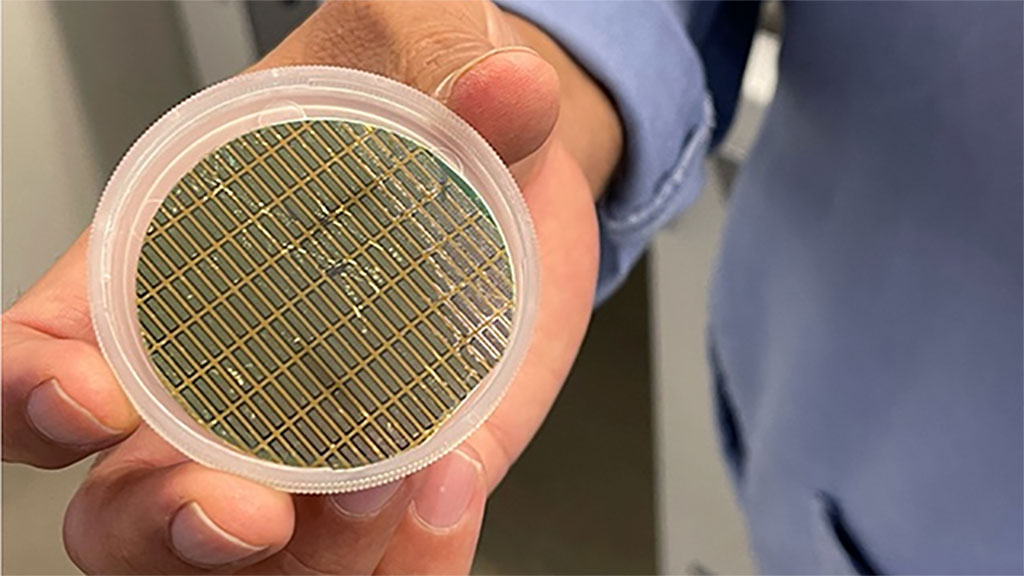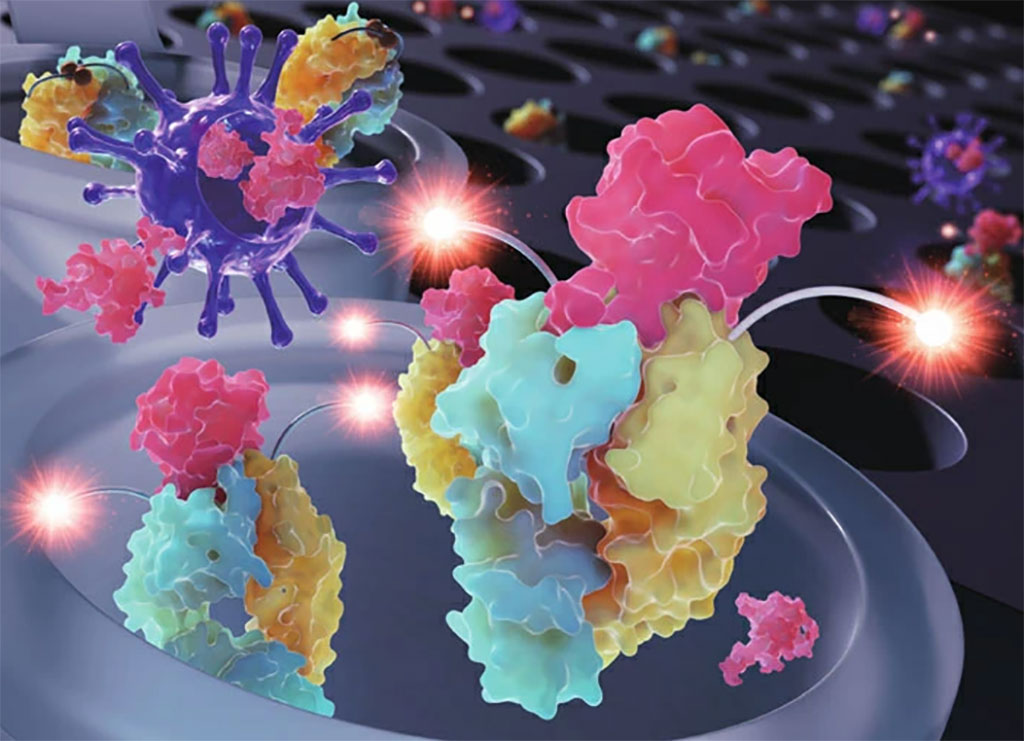New COVID-19 Antigen Testing Method Offers Highly Accurate Results in Less than Three Minutes
Posted on 04 Oct 2021
A new rapid antigen nasal swab test eliminates false positives and detects COVID-19 spike proteins before the onset of symptoms.
Researchers at Northwestern University (Evanston, IL, USA) leveraged a cantilever-based sensor platform to develop rapid, cost-effective and multiplexed antigen test, with potential for point-of-care diagnosis. Its high sensitivity to specific proteins may allow the platform to detect different viruses, COVID-19 variants and test-related markers, with potential for using breath for COVID-19 testing

New variants to the COVID-19 virus have challenged the capacity of existing testing methods to deliver fast and consistently accurate test results, as PCR tests must be sent to labs and can take days to be returned. Furthermore, rapid antigen alternatives struggle to match up to the gold standard. But to effectively slow the rate of infection, spaces like schools and hospitals need ways to accurately identify infected individuals within their first days of infection as they’re walking in the door.
The new novel antigen-based COVID-19 detection method demonstrated 100% accuracy in a blind test in five or fewer minutes from swab to signal. The rapid swab test uses a nanomechanical platform to detect multiple surface proteins on the COVID-19 virus, and shows potential to differentiate among different variants and viruses. The high-sensitivity test is also being developed as a rapid exhaled breath COVID-19 detection method, similar to a breathalyzer test.
The platform, which leverages microscopic cantilevers, was originally developed 15 years ago to detect protein interactions with DNA, so could effectively be “dusted off” and repurposed. The tiny cantilevers are made of silicon and can be easily reproduced by following a mold, making them an attractive option for potential mass-production. After optimizing the old technology for use with electronic imaging, the scientists acquired patient swab samples and used data to understand how diseases move through communities. The team applied coatings of different COVID-19 antigens onto each “finger” of five silicon cantilevers next to an additional one for reference. Then, collected swab samples were grafted onto the cantilever surface. If COVID-19 antibodies were present in the sample, they caused the thin cantilever with corresponding antigens to bend, with each finger serving as an extra line of defense for any other antigens.
In addition to incorporating multiple variants and diseases into the mechanism, the team’s goal is to expand the platform to hold more capabilities. The researchers are now looking for ways to scale and produce the technology and ultimately bring it to mobile devices, using the approach to bring no-contact testing to the public. Children back in school combined with the well-researched fact that underserved populations are at higher risk of exposure underscores the need for non-invasive and rapid diagnostics approaches. Breath sampling could be used for managing and mitigation in future public health challenges, according to the researchers. For instance, people entering hotels, hospitals and schools, could pick up one of such tests to breathe into, and then know whether they’re infected by the time they’re on the other side of the room. Developing this fast understanding of people who are sick even without displaying symptoms can change the way mitigation strategies work.
“We were excited to apply the technology because these are micro- and nanosystems that don’t need a lot of viral material to make a difference,” said Northwestern materials science and engineering professor Vinayak P. Dravid. “Microcantilevers can give you a faster turnaround - within two or three minutes - because they leverage specific affinity surface binding. And unlike most sensors available that rely on just one protein, we can look at multiple targets at the same time.”
“Instead of nasal swabs, we want to use breath,” added Dravid. “Because the sensitivity of the technique is so good, breath has a lower viral load, but it has enough virus for this technology to detect.”
The technology is not limited to COVID-19 detection, according to Gajendra S. Shekhawat, a Northwestern materials science and engineering research professor. “We have some initial data to demonstrate the high sensitivity to other diseases in addition to COVID,” he said. “We also are developing integrated microfluidics that will allow us to dip multiple cantilevers into antibody solutions and detect multiple viral loads at the same time.”
Related Links:
Northwestern University













